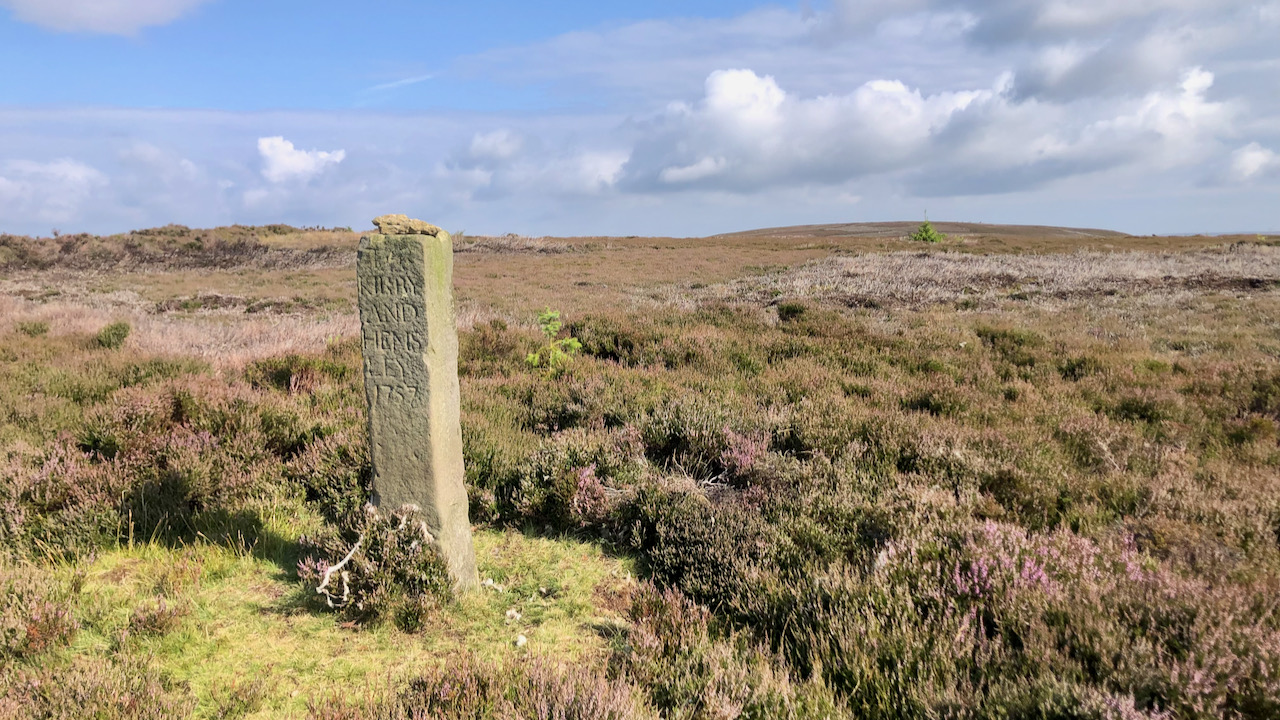On the desolate expanse of Ingleby Moor stands a weathered stone guidepost, rising tall beyond a metre. Its west face bears the inscription “TO INGLEBY AND STOXLEY,” while the east face proudly displays “TO GUISBORO,” and on the south face, the words “TO KIRBY AND HELMSLEY 1757” are inscribed. But what sets this landmark apart are the intricate carvings of hands adorning the west and north faces, earning it the name it is now commonly known by1NYM HER No.: 5743.
Sunken on top of the post is a hollow. A peculiar tradition held that benevolent travellers would leave a few pennies for those in dire need, though one might wonder what solace such a meager offering would provide in these high, isolated moors. To safeguard the hollow from being filled with rainwater, a rock has been thoughtfully placed upon it.
From ancient times, the paths of long-distance routes have been marked by cairns of stones, distinctive trees, or posts at crucial crossroads. These markers served as crucial beacons, guiding wanderers in regions where inquiring for directions would prove fruitless, rather than merely measuring distances. Throughout the early medieval era, stone crosses were a common sight on these lonely moors, standing tall to guide the way, a sight that was likely common before the Reformation’s wave of religious monument removal and destruction.
In 1697, during the reign of William and Mary, a tragic incident spurred action. A mother and her children lost their lives while attempting to traverse some treacherous moors near Sheffield, prompting the passing of legislation2Ochota, Mary Ann. “Hidden Histories: A Spotter’s Guide to the British Landscape”. Page 138. Frances Lincoln Lt. 2016.. The law dictated that in remote areas, where paths intersected, sturdy stones must be erected to guide travellers towards the nearest market town. Local justices bore the responsibility to fulfil this mandate, though the momentum to implement the law took time to gain traction. Only well into the next century did the North Yorkshire justices finally act upon the legislation, ordering guideposts to be raised. Most of these markers would have been crafted and carved by the hands of local people, making it an interesting project to compare the artistic merits of the carvings and quaint spellings that grace them3Wikipedia Contributors. 2023. ‘Fingerpost’, Wikipedia (Wikimedia Foundation) <https://en.wikipedia.org/wiki/Fingerpost#History> [accessed 26 July 2023].
- 1NYM HER No.: 5743
- 2Ochota, Mary Ann. “Hidden Histories: A Spotter’s Guide to the British Landscape”. Page 138. Frances Lincoln Lt. 2016.
- 3Wikipedia Contributors. 2023. ‘Fingerpost’, Wikipedia (Wikimedia Foundation) <https://en.wikipedia.org/wiki/Fingerpost#History> [accessed 26 July 2023]

Leave a Reply